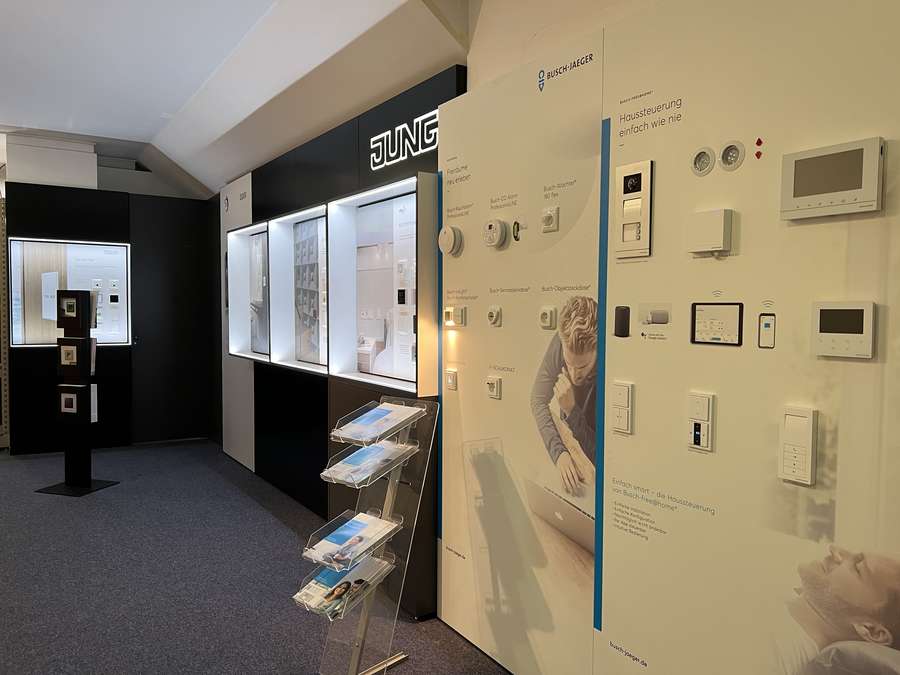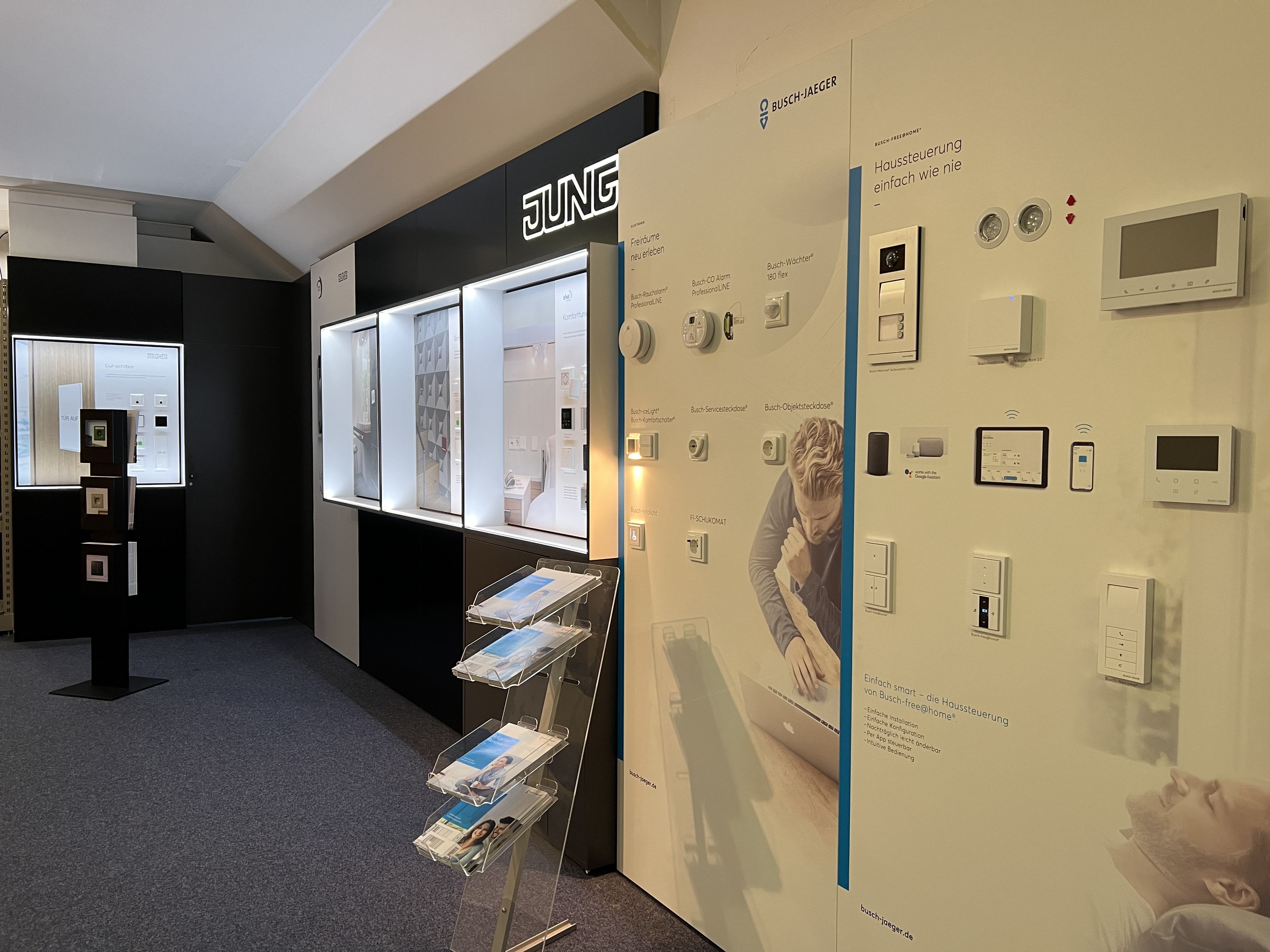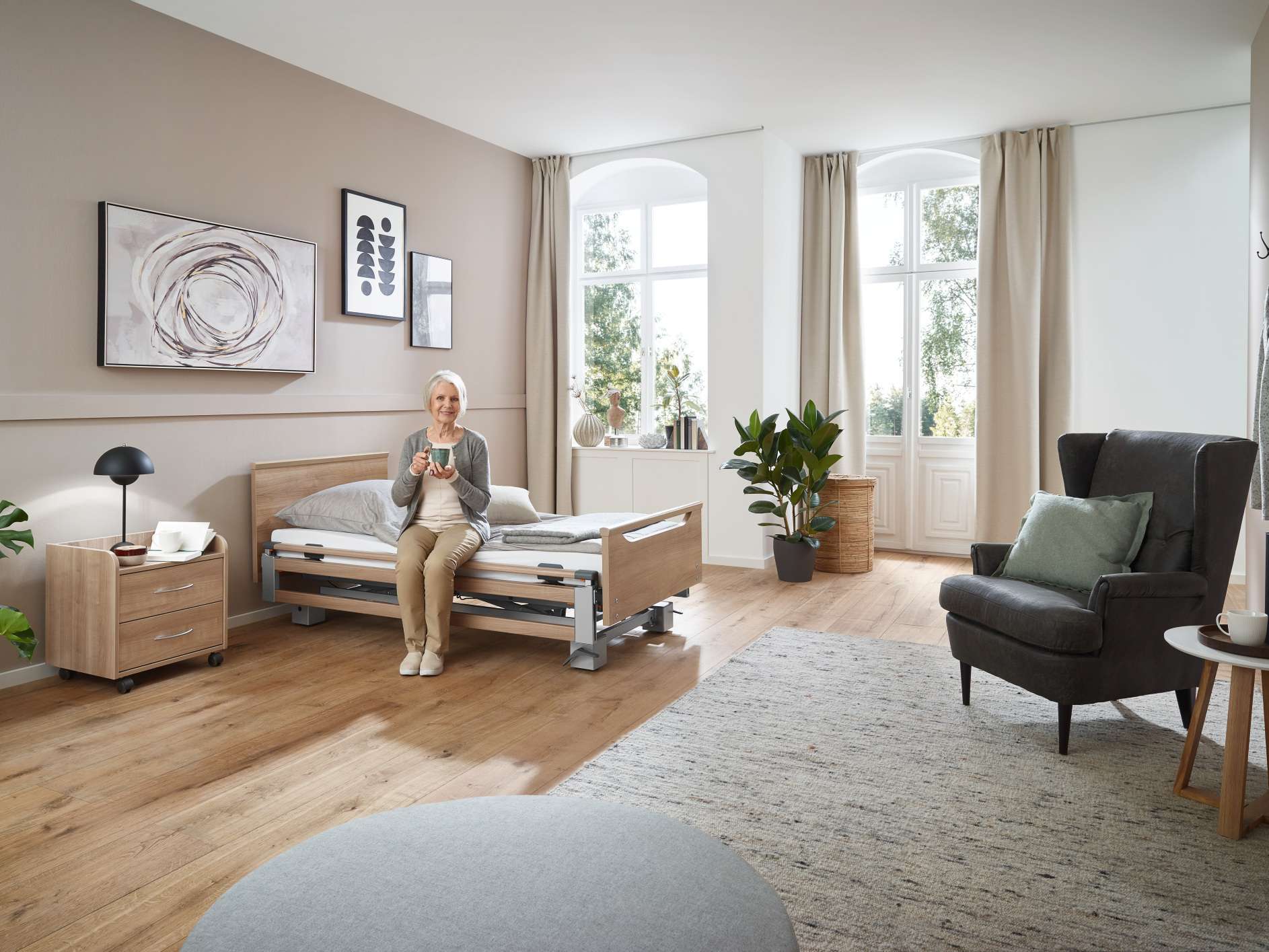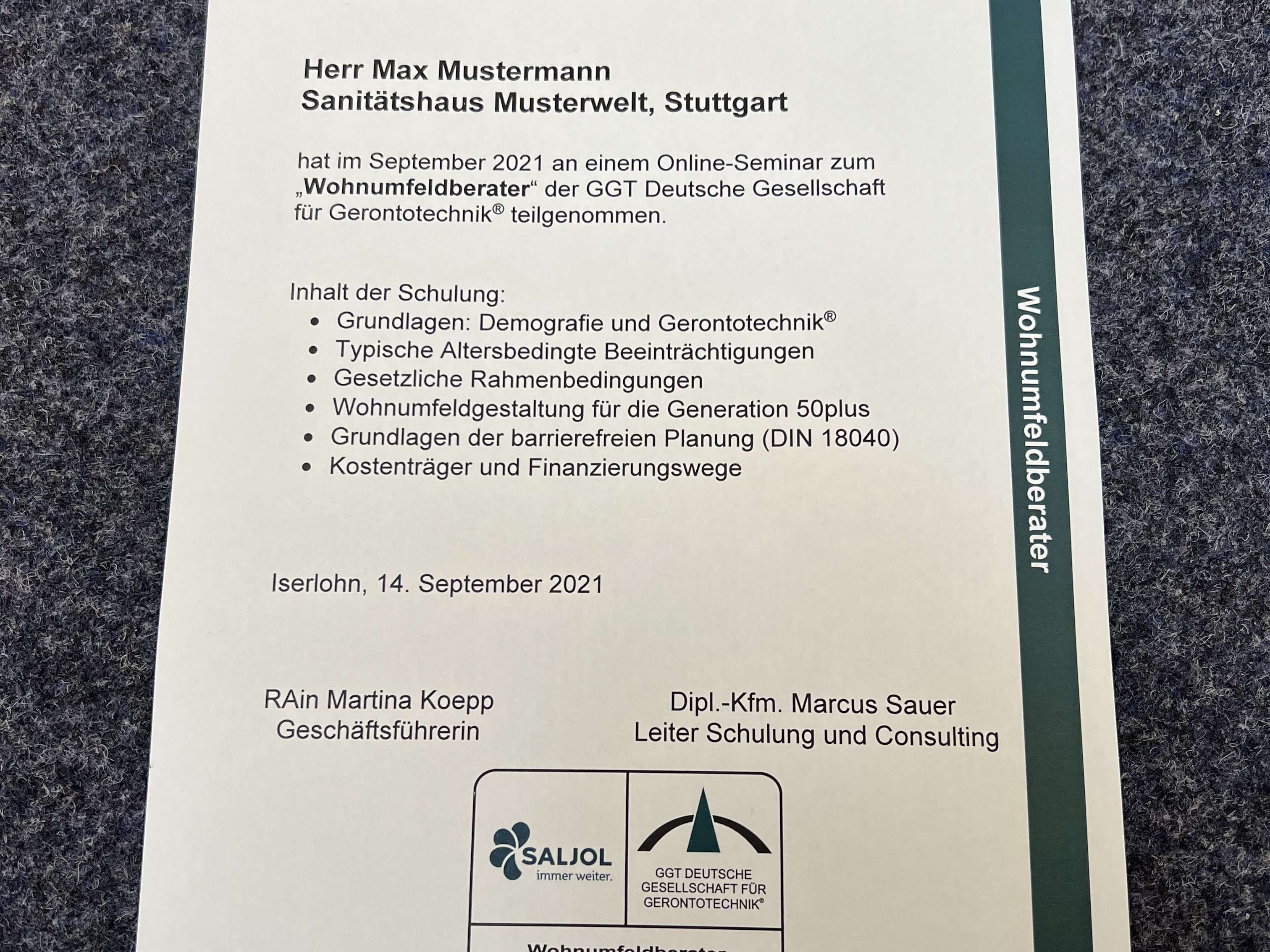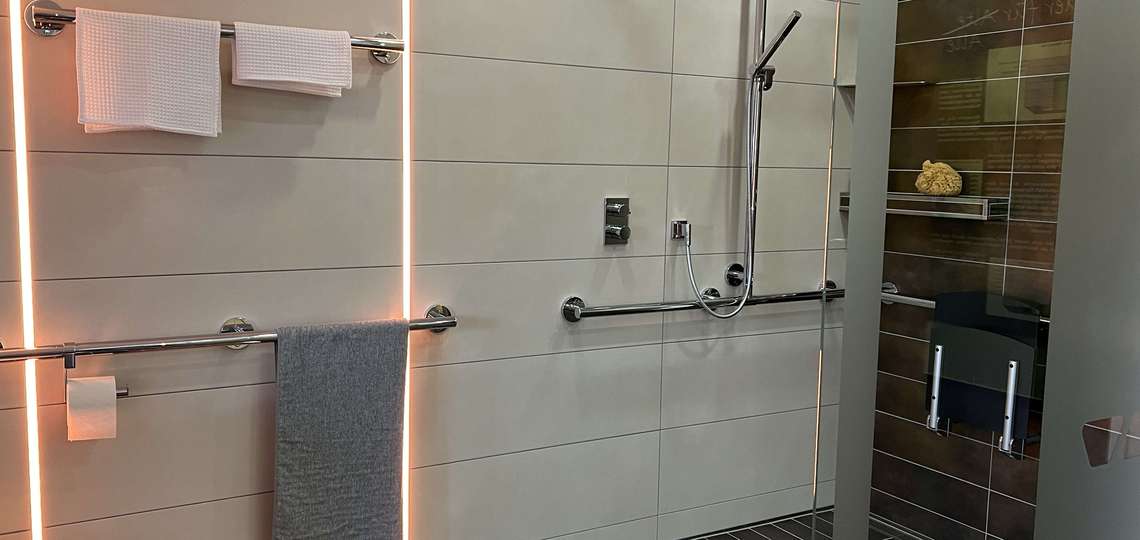
Smart tips for a better life in old age
The GGT Deutsche Gesellschaft für Gerontotechnik® (German Gerontological Society) strives for the well-being of the 50 plus generation of customers

As is the case in many countries around the world, the number of senior citizens in Germany is rising rapidly. At some point, many will find themselves in a special situation: they do not yet need long-term care, but they do need support for a happy and self-determined everyday life. Suitable products and a clever redesign of the home can considerably increase the quality of life. The GGT German Society for Gerontotechnology, based in Iserlohn, offers valuable assistance – for example, with a training course to become a living environment consultant, in which employees of our company from the Homecare and Lifestyle Beds divisions have also participated. We spoke to Marcus Sauer, responsible for training and consulting at GGT.
Mr Sauer, please briefly introduce your company.
GGT German Society for Gerontotechnology has been around for almost 30 years. Our goal is to bring together the industry and the end customer from the 50 plus age group. In principle, there have been many products for this group for a long time. We advise the industry on how to make the products a little better and provide the end customers with information about them.
How do you inform the customers?
This happens above all in our showroom in Iserlohn. On more than 1,000 square metres, we show many solutions that make life in old age more pleasant. The spectrum ranges from practical aids to comfortable living situations and overall concepts. End consumers can find inspiration here just as much as professionals from architects' offices, from the long-term care sector or the hotel industry. And, of course, the craftsmen are important: we conduct training courses for sanitary or electrical craftsmen, for example, who can then pass on the information to their customers.
What kind of people come to your showroom?
In the private consumer sector, the "50-plus comfort customers" are the most frequent. These are people who do not yet have any major limitations. But they may be planning a renovation and say: "I want to be able to continue living at home in five or ten years' time. The age limit of 50 is, of course, arbitrarily chosen here; many also come at 60 or beyond. Some visitors have just had their life insurance paid out and now want to invest the money for a good life in old age. In general, one should think about removing barriers in one's own home at an early age. At 85, it is more difficult to organise renovation measures. Digitalisation in a "smart home" should also be considered at a younger age.
Which room of the home is most important to your visitors in terms of barrier removal?
This is the bathroom. It is at the edge of the shower, on the slippery floor or in front of the high bathtub that people first notice age-related changes. From this starting point, they then often think further: How will I get up the stairs later? Do I need automated blinds?
At Stiegelmeyer and Burmeier, we are of course particularly interested in age-appropriate bedrooms.
The bedroom is a rather neglected room when it comes to barrier removal. There is often a pragmatic reason for this: visitors do not look in there. While you can score points with a smartly modernised bathroom in front of guests, the bedroom remains hidden from the public. At some point, however, the question of the bed being too low does arise. People can no longer get up easily in the morning. Not infrequently, 10 cm high wooden blocks are pushed under the bed for the time being, but that is not a permanent solution. Then the purchase of a higher or a future-proof height-adjustable bed is up for debate. In this case – at least more and more often – people are already thinking about the need for nursing care later on, beyond the pure comfort function.
Do topics such as low-height beds close to the floor or safety sides to prevent falls play a role for your visitors?
If products look too much like care aids, it often becomes difficult – people are not yet looking for that here. The prejudice "That's something for old people, but I'm not old yet" is very common. The rooms we show here have mostly barrier-free functionality, some of them are also wheelchair accessible, but you don't see it at first glance. The rooms look beautiful, we work with light, with colour, with different materials. Even very young visitors say: "I'd like to have that at home, too".

Comfort and beautiful design also play a major role in our beds and furniture. You just mentioned colours: Are there any current trends? Or colours that older people like and find pleasant?
Of course, this is always a matter of taste. But there are a few principles: You should work with contrasting colours in a room that clearly contrast with each other and thus clearly separate the background from the foreground. This way, people of all ages can easily find their way around. If there are cognitive limitations due to dementia, one should bear in mind that many colours retain their learned meaning for a long time: A red object may be understood as a warning, a blue floor looks like water and is avoided.
What possibilities are there for state funding in Germany if you want to make your home age-appropriate?
You can receive up to € 4,000 from the long-term care insurance fund for "measures to improve the living environment". However, you need a care level (ed. note: In Germany, care levels determine which subsidies insured persons receive from their long-term care insurance fund) – and that means that you often have to manage the home conversion in old age. An attractive alternative is the funding programme "Altersgerecht Umbauen" (Age-appropriate Conversion), which subsidises conversions by up to 10 percent. Unfortunately, the funds are currently exhausted. Whether the pot will be replenished in 2022 will only be decided when the new federal budget is ready in the summer.
With so many exciting topics, a well-trained living environment consultant is indeed very useful! How did this training project come about?
This is a joint project with the company Saljol, a manufacturer of high-quality aids. The staff have a very good connection to the medical supply stores, we have good insights into the wishes of the elderly customers. The participants are often sales representatives and other employees of medical supply stores.
What do the participants learn in your seminars?
The first question is: Who are the customers outside the German prescription business (ed. note: In Germany it is possible to receive a prescription for e.g. a care bed that is then mostly paid for by the person’s health or long-term care insurance)? What are their wishes and needs in terms of comfort and "beauty", i.e. design-oriented products? Then we talk about typical age-related impairments that affect us all at some point and that should also be taken into account when advising customers: How do I recognise that a person no longer hears or sees well, and how can I react to this in the counselling interview?
What concrete suggestions can a living environment consultant make in the client's home?
If you walk through a home with your eyes open, you can often quickly spot opportunities for improvement that can be implemented with little effort. Many tripping hazards can be easily removed. There must be enough free spaces where residents can move around unhindered. Interestingly, such tips are often much more readily accepted from an external consultant than from their own relatives. Our participants learn that they have an important positive influence in this situation, which often leads to a change in awareness among the residents. In our online seminars, we show a live broadcast from our showroom for this purpose, where we demonstrate movement areas with a walker or wheelchair and point out edges. Finally, we also address the questions of which specific products can be used to improve the quality of life of customers and how they can be financed.
How does such a consultant seminar work?
The seminar takes place over two days and is currently being held online due to the pandemic. On the first day, GGT will deal with the above-mentioned topics. On the second day, our partner Saljol delves into the product level with topics such as marketing approaches and sales presentations. There are 15 to 20 participants per seminar. The interest is great – in the past two years, more than 230 people have taken part in our seminars.
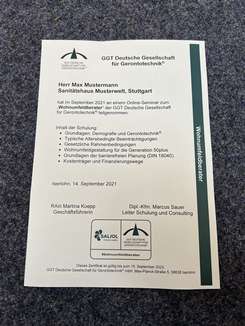
Do you receive some kind of diploma after successful participation?
Yes, we do indeed have a nice certificate. With this certification, the new living environment consultants can go to work with inspiration and a lot of new knowledge and meet an important need for solution-oriented counselling.

